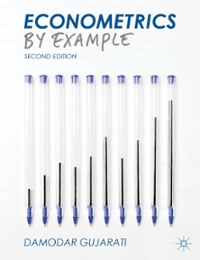econ 98
Lectures 15 & 18: Common Property & Incentives 4. Consider two farmers and two pieces of land. We want to know what the effect is of each farmer working his own piece of land versus the farmers cooperating and jointly working on the two pieces of land. To simplify the exposition, we will denote these as "independent farmers' and "cooperative farmers' respectively. Assume that each farmer (whether independent or cooperative) can decide on his own how much time to spend on farming. Let farmer 's weekly time spent on farming be denoted h, (in hours per week; so h, for farmer 1 and h, for farmer 2). The farmer's productivity (expressed in bushels of grain) is directly proportional to the time he spends on farming In particular, an independent farmer produces 80 k bushels of grain if he works h, hours per week. Farmers in a cooperative are more productive since they can specialize: a cooperative farmer produces 90 h, bushels of grain if he works h hours per week. Cooperative farmers share the output of their farm equally. Let by be the bushels of grain that farmer i can take home at the end of the year, then b, = 80h, for an independent farmer, while b, = (90 k, + 90 h )/2 for a cooperative farmer. Farmers dislike working and more so as they work more. In particular, farmer 's utility is u, = b - 2 We assume that a farmer i will choose h, to maximize his utility a a. Write out the utility functions of an independent farmer and a cooperative farmer completely in terms of hy and hy. b. How many hours will an independent farmer work (assuming that farmers choose h, to maximize their utility)? What is his utility? C. How many hours will a cooperative farmer work? What is his utility? d. What is the problem with a cooperative farm? What would happen (qualitatively) if 100 farmers worked jointly in a cooperative farm? How could the farmers solve that problem?16 POINTS Consider the standard Solow growth model. Let productivity be denoted by A and let the production function be Y=AF(KN). For simplicity, assume that there is no population growth (n = 0 so that N' = N). Let depreciation be denoted by dand the savings rate by s. a. Derive the per capita capital accumulation equation for =K/Nand the steady state level of capital per worker, $s. Please show the details of your derivation to earn points. Draw the Solow model graph showing the savings line and the depreciation line and marking the steady state level of k. b. Now, consider the "AK model" with production function Y = AK , where A is the exogenous productivity level. Again, assume that there is no population growth in the economy. Follow the similar steps in part a. to derive the capital accumulation equation in terms of capital per capita k. c. Based on the equations you derived in part b, draw a graph similar to that of the Solow growth model to show the steady state of the model in part b. If you cannot find such a steady state, please explain why. d. Recall that Solow growth model implies convergence in capital per capita. Does the model in part b has this feature










